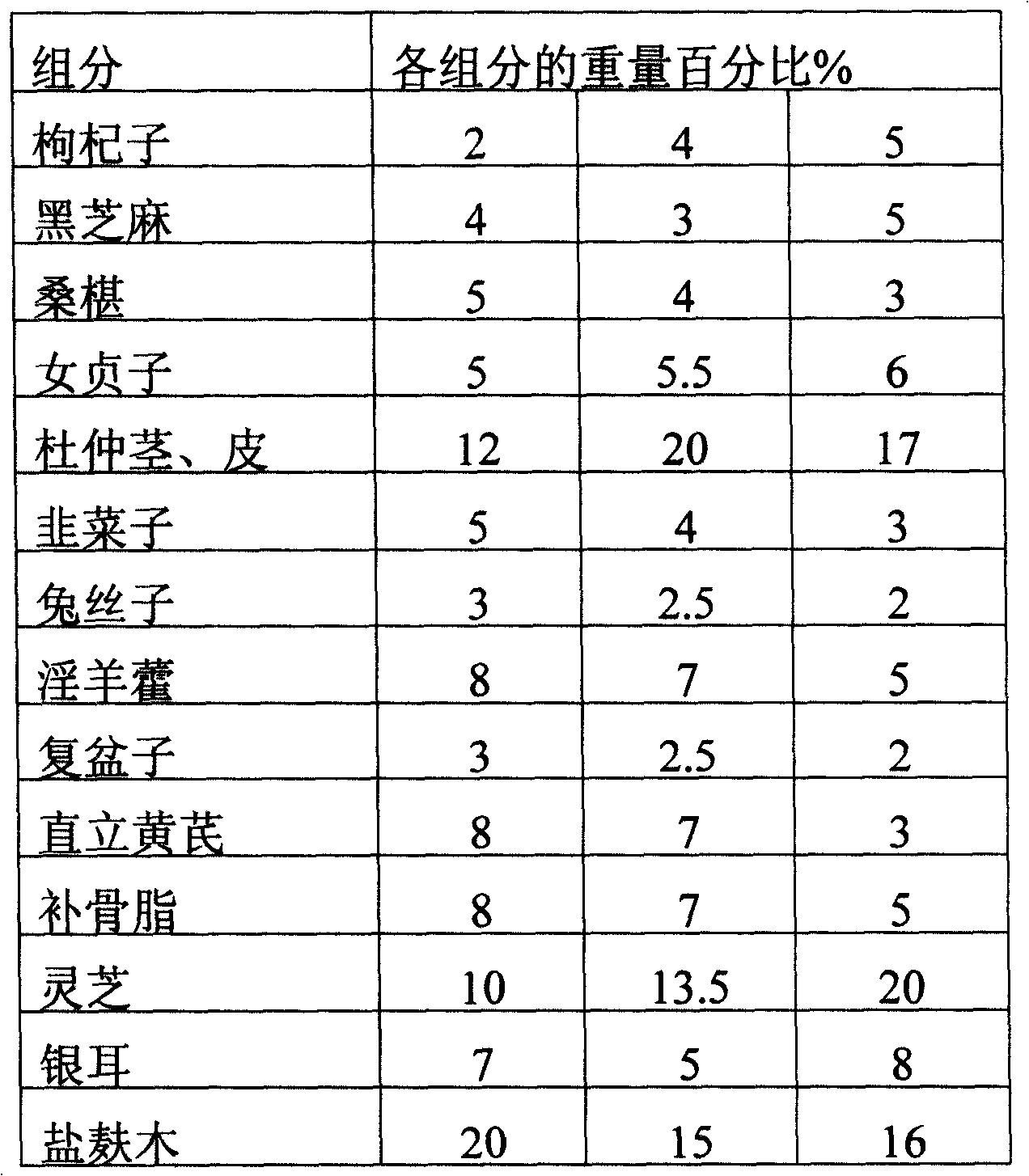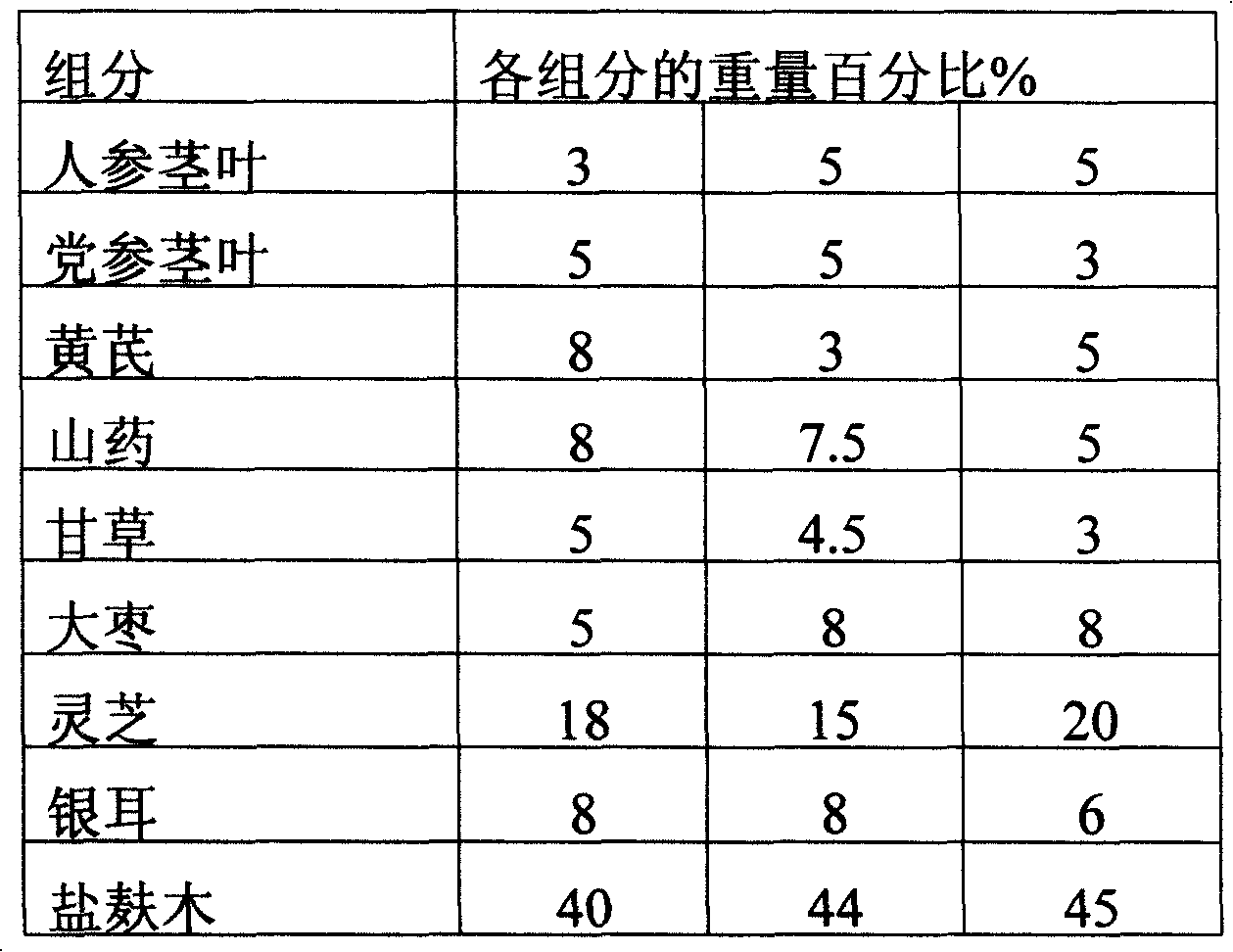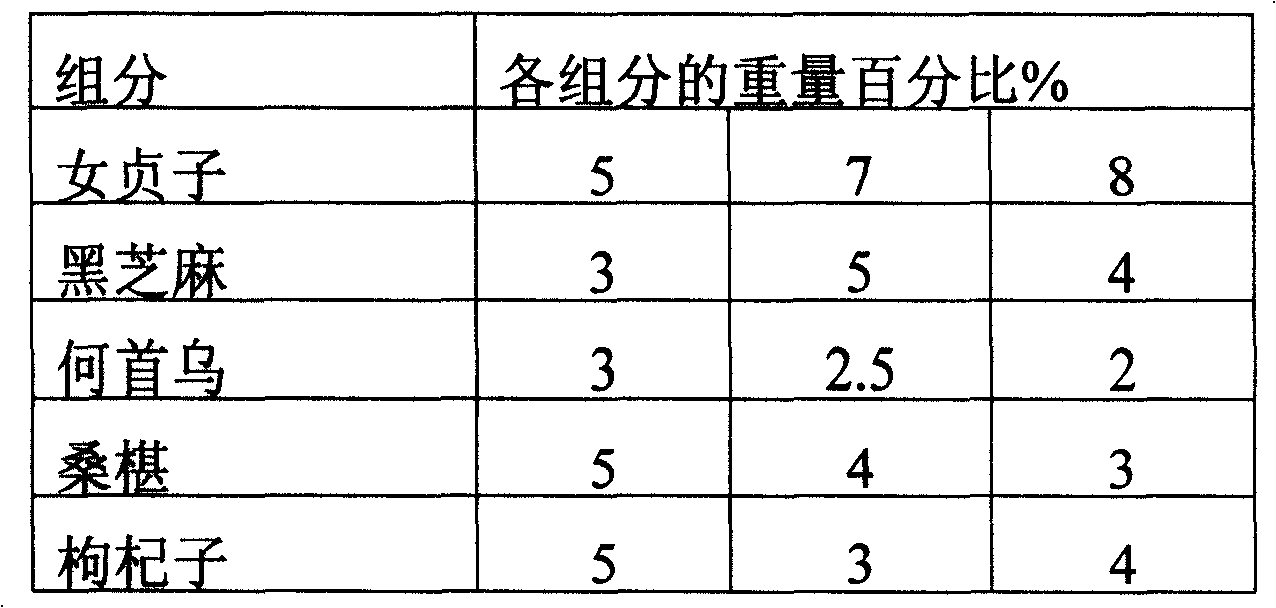Chinese medicinal herb culture medium, preparation method thereof and cultivation method of edible fungus
A technology of Chinese herbal medicine and culture medium, which is applied in the fields of botanical equipment and methods, pharmaceutical formulations, applications, etc., can solve the problems of unsatisfactory health care function and few effective ingredients, etc.
- Summary
- Abstract
- Description
- Claims
- Application Information
AI Technical Summary
Problems solved by technology
Method used
Image
Examples
specific Embodiment approach 1
[0019] Specific embodiment one: the Chinese herbal medicine culture medium described in the present embodiment is made by the mixture and water that following percentage by weight component is made: this mixture comprises Chinese herbal medicine 65~70%, cottonseed hull 30~35%, superphosphate 2 ~3%; the ratio of the weight of water to the total weight of the above mixture is 1:1. Wherein, the Chinese herbal medicine is composed of the following components by weight percentage: 2-5% medlar, 3-5% black sesame, 3-5% mulberry, 5-6% Ligustrum lucidum, 12-20% eucommia stem, bark %, leek seed 3-5%, rabbit silk seed 2-3%, epimedium 5-8%, raspberry 2-3%, erect astragalus 3-8%, psoralen 5-8%, ganoderma lucidum 10- 20%, white fungus 5-8%, salt bran wood 15-20%. The edible fungus cultivated by the culture medium described in the scheme has the health care function of invigorating the liver and kidney. The specific proportions of the Chinese herbal medicine components described in this ex...
specific Embodiment approach 2
[0022] Embodiment 2: The difference between this embodiment and Embodiment 1 is that the Chinese herbal medicine is composed of the following components by weight percentage: 3-5% of ginseng stems and leaves, 3-5% of Codonopsis pilosula stems and leaves, 3-5% of astragalus 8%, yam 5-8%, licorice 3-5%, jujube 5-8%, ganoderma lucidum 15-20%, white fungus 6-8%, salt bran wood 40-45%. Other compositions are the same as in Embodiment 1. The edible fungus cultivated by the culture medium described in the scheme has the health-care effect of invigorating qi. The specific ratio of the Chinese herbal medicine components described in this example is shown in Table 2.
[0023] Table 2:
[0024]
specific Embodiment approach 3
[0025] Embodiment 3: The difference between this embodiment and Embodiment 1 or Embodiment 2 is that the Chinese herbal medicine is composed of the following components by weight percentage: Ligustrum lucidum 5-8%, black sesame 3-5% , Polygonum multiflorum 2~3%, Mulberry 3~5%, Lycium barbarum 3~5%, Lily 3~5%, Ophiopogon japonicus 3~5%, Dendrobium 3~5%, Polygonatum 2~3%, South and North sand Ginseng 10-15%, white fungus 5-8%, ganoderma lucidum 15-20%, salt bran wood 25-30%. Other compositions are the same as those in Embodiment 1 or 2. The edible fungus cultivated by the culture medium described in the scheme has the health-care effect of nourishing yin. The specific proportions of the Chinese herbal medicine components described in this example are shown in Table 3.
[0026] table 3:
[0027]
[0028]
PUM
 Login to View More
Login to View More Abstract
Description
Claims
Application Information
 Login to View More
Login to View More - R&D Engineer
- R&D Manager
- IP Professional
- Industry Leading Data Capabilities
- Powerful AI technology
- Patent DNA Extraction
Browse by: Latest US Patents, China's latest patents, Technical Efficacy Thesaurus, Application Domain, Technology Topic, Popular Technical Reports.
© 2024 PatSnap. All rights reserved.Legal|Privacy policy|Modern Slavery Act Transparency Statement|Sitemap|About US| Contact US: help@patsnap.com










